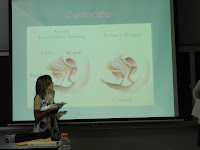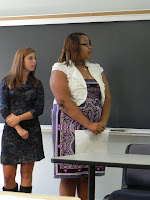What is friendship?
True friends remain bound together for eternity. Friendships form an essential element in helping us to grow into authentic human beings. I recently attended my 50th high school reunion. I felt blessed to have had the relationships I have had with many of the people in my class for over 50 years. Some of them started in elementary school with me and have remained close all of these years. We all have as we say “been to hell and back.” We have stuck by each other no matter what, and they definitely have helped me grow. I hope I have done the same for them.
In class we studied three writings about friendship:
1. from the author of Sirach, (200-175 BC) a didactic book of the Roman Catholic canon of the Old Testament from the biblical apocryphal literature;
2. Cicero, (106 BC-43 BC) Roman philosopher; and
3. Aelred of Rievaulx, (1109-1167), a monk in Yorkshire, England.
Sirach
Test friendship.
Do not trust hastily.
Some will be such when it suits them.
Some will not stand by you in times of trouble.
Some will change into enemies.
When you are prosperous, some will stand by your side, but when you are low they hide.
Keep away from your enemies and be on guard with your friends.
Faithful friends are a sturdy shelter, a treasure, beyond price, life saving medicine. Those who fear the Lord will find them, direct their friendship aright.
Cicero
Friendship is different from other things in the world. It is not for riches, to be spent; power, to secure obedience; public office, to win praise; pleasure, to enjoy oneself; good health, to be free from pain and make full use of one’s bodily endowments.
Friendship is—whatever direction you turn it is yours. No barrier can shut it out. It is untimely, never in the way.
Friendship is authenic, a truly admirable sort of relationship. Friendship adds a brighter glow, relieves adversity by dividing and sharing the burden. It is unique because of the bright rays of hope it projects into the future. It never allows the spirit to falter or fail. A true friend is like looking at yourself in the mirror. Even when a friend is absent, he is present. However poor he is, he is rich; however weak, he is strong. Even when he is dead, he is alive because friends will cherish him and remember him and long for him. There is happiness even in death.
Aelred
Friendship is to be tested with extreme caution. Test friendship to guard your heart. Friendship is the guardian of the soul. Without friends, you do not fulfill your obligation to your soul. With a friend, two souls become one. Friendship is mutual harmony coupled with benevolence and charity. It is affection of the heart, affection of the rational soul. Friendship is the guardian of love. It preserves secrets in silence bound by love and sweetness. It is eternal, peace, unity, companionship, and bears fruit in this life and the next.
Our friendships have an impact on our actions and behaviors. “Bad company ruins good morals.”
Friendship in Harry Potter
From Dr. Catherine Howard’s book A Theology of Hogwarts:
The Journey of the Soul in Harry Potter
The Golden Trio of Harry, Ron, and Hermione illustrates true friendship. At their first meeting on the Hogwarts Express, Ron and Harry develop an immediate liking for each other. But there are tests. An example is when Hermione tries to correct Ron, and he says no wonder nobody likes her. This hurts Hermione, but the friendship is saved when Ron and Harry save Hermione from a full-grown troll. Hermione lies to the professors who rush in. She praises the boys’ heroism, and from that moment on, their friendship flourishes.
Ron struggles the most with the friendship because of his jealousy over all the attention Harry gets and his self absortion. For example, Ron accuses Hermione’s cat of devouring his rat and doesn’t let this go and it seemed like this might be the end of their relationship.
The friendship of the trio experiences the biggest test when they are searching for the Horcruxes. Ron cannot take it and leaves Harry and Hermione to continue their quest without him. Hermione remains faithful even under the most difficult circumstances.
According to Aelred, one is called to continue to love despite whatever one encounters. Hermione, Ron, and Harry continue to love each other and support each other, even through the most difficult times. Their friendship passes the test of authentic friendship. Aelred writes, “Scarcely any happiness whatever can exist among mankind without friendship, and man is to be compared to a beast if he has no one to rejoice with him through adversity.”












